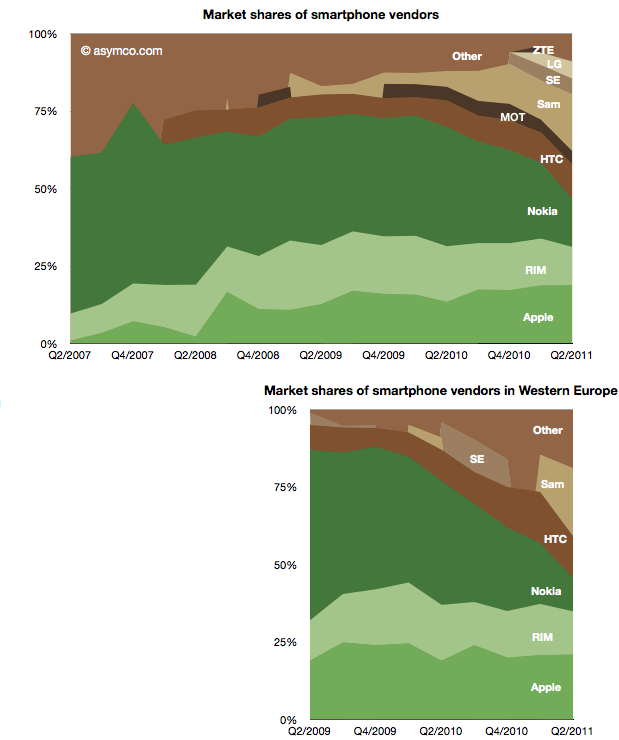In a rare reflective moment Steve Jobs, after the launch of the iPad, mentioned Apple’s DNA. He said:
“Technology alone is not enough. It’s technology married with the liberal arts, married with the humanities, that yields the results that makes our hearts sing.
Nowhere is that more true than in these post-PC devices…that need to be even easier to use than a PC, that need to be even more intuitive than a PC; and where the software and the hardware and the applications need to intertwine in an even more seamless way than they do on a PC.
We think we are on the right track with this. We think we have the right architecture not just in silicon but in the organization to build these kinds of products.”
Steve Jobs’ legacy in product development has been clearly established and celebrated. What remains now is to determine his legacy in company development. If indeed Apple has the “right architecture in the organization” to serially build disruptive products. The collection of evidence begins today.
If Apple has indeed become Jobsian then it will have been a grand achievement. John Gruber is already convinced. He points out
Jobs’s greatest creation isn’t any Apple product. It is Apple itself.
If indeed he has built Apple sufficiently well to last then he has built an admirable process and not just a product. But this would not be a unique achievement. There have been other companies which preserved their founders’ cultural imprints, at least for significant periods beyond their departure. Consider that Disney, Ford and even HP and IBM remained successful for many years after the departure of their founders operating much the same way. They were infused with an indelible culture and preserved it for some time.
But a leader should aspire to do more. A leader should claim to have left a legacy not just on their company but on all companies.
Is it not more worthy to have changed civilization than the fortunes of a few?
I believe that Steve Jobs has actually sought just that. He put it as “making a ding in the universe.” This can be interpreted as developing products that “change everything”. But if the thing that Steve Jobs should be most proud of is the creation of Apple Inc. then how exactly could an Apple Inc. benefit the world?
This is where Jobs’ quote above strikes me as valuable. The lesson the world should take from Apple is that a company needs to become multi-dimensional. It needs to mix the core business with the disruptive innovation. It needs to combine the intellectual with the artistic. It needs to maintain within it the rational and the lunatic.
Apple’s violent success should serve as a powerful beacon that others should follow. Rather than copying its products other companies should copy Apple’s processes–its way of thinking. They should copy how Apple harbors the creative process and the technology processes under the same roof.
If they do heed this call then we should look forward to the the post-Jobs era as that time when large companies gained the ability to intertwine multiple core competencies. A time when humanism balanced corporatism. A time when we came to reconcile the rational and spiritual.
—
This post has be re-published in The Harvard Business Review Blog as: Steve Jobs’s Ultimate Lesson for Companies – Horace Dediu – Harvard Business Review

